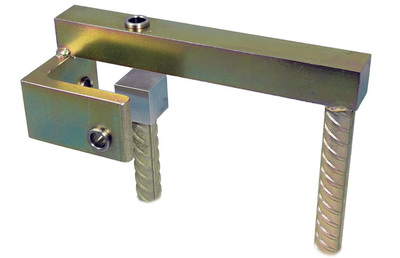The Mechanical Triaxial Jointmeter is designed to measure movement in three axes across any joint, be it a construction joint in concrete or a tension crack in rock.
The Mechanical Triaxial Jointmeter is designed to monitor three way displacement (X, Y and Z) across joints or cracks between adjoining concrete and rock structures.
The Jointmeter comprises two elements; a zinc coated measurement arm and a Stainless Steel reference head, both attached to reinforcing bar embedment anchor stems.
The measurement arm incorporates three orthogonal locating bushes, designed to receive a mechanical or electronic micrometer.
The Stainless Steel reference head is a cubic anvil, with precision machined reference faces, providing a surface against which the triaxial displacement measurements are made.
Manual measurement with a mechanical gauge is a more preferred option when fewer readings are required.
Product Features
- Reads in X, Y and Z axes
- Accurate and precise
- Proven in long-term monitoring
- Simple in principle and operation
Product Benefits
- Three way independent movement monitoring in one easy installation
- Low and easy maintenance
- Long working life, long-term stability and reliability
Mechanical Triaxial Jointmeter Operation
The arm anchor stems are embedded at either side of the joint, crack or fissure to be monitored, either in wet concrete at a construction joint, or grouted firmly into drilled holes in a pre-existing mass or structure, using cementatious or chemical grouts.
A temporary, removable jig maintains the two halves of the jointmeter in correct alignment at its mid-range, until the embedment medium has gained sufficient strength to be able to fully support the jointmeter.
Readings are acquired by recording the current distance from the measurement bushes to the reference anvil in X, Y and Z planes. The current readings are then subtracted from an initial base reading to give relative movement of the joint or crack.
Application
The Mechanical Triaxial Jointmeter is used for the measurement of X, Y and Z dimensional relative movement between two abutted structures or masses.
Typical applications include:
- Concrete dam construction joints
- Tunnel and shaft lining segments
- Bridge construction
- Masonry structures
- Structural and superficial cracks
Geomotion offer installation and monitoring services to support this system. For more information please email info@geomotion.com.au or contact any of our locations.
